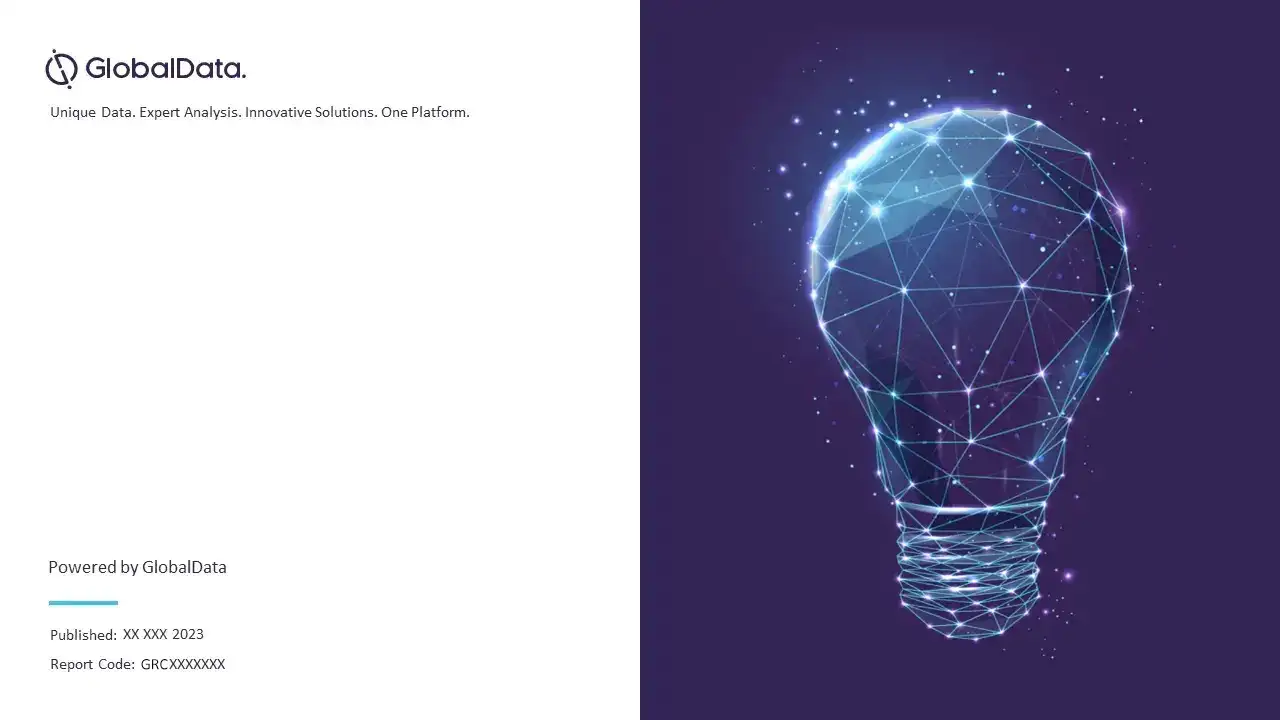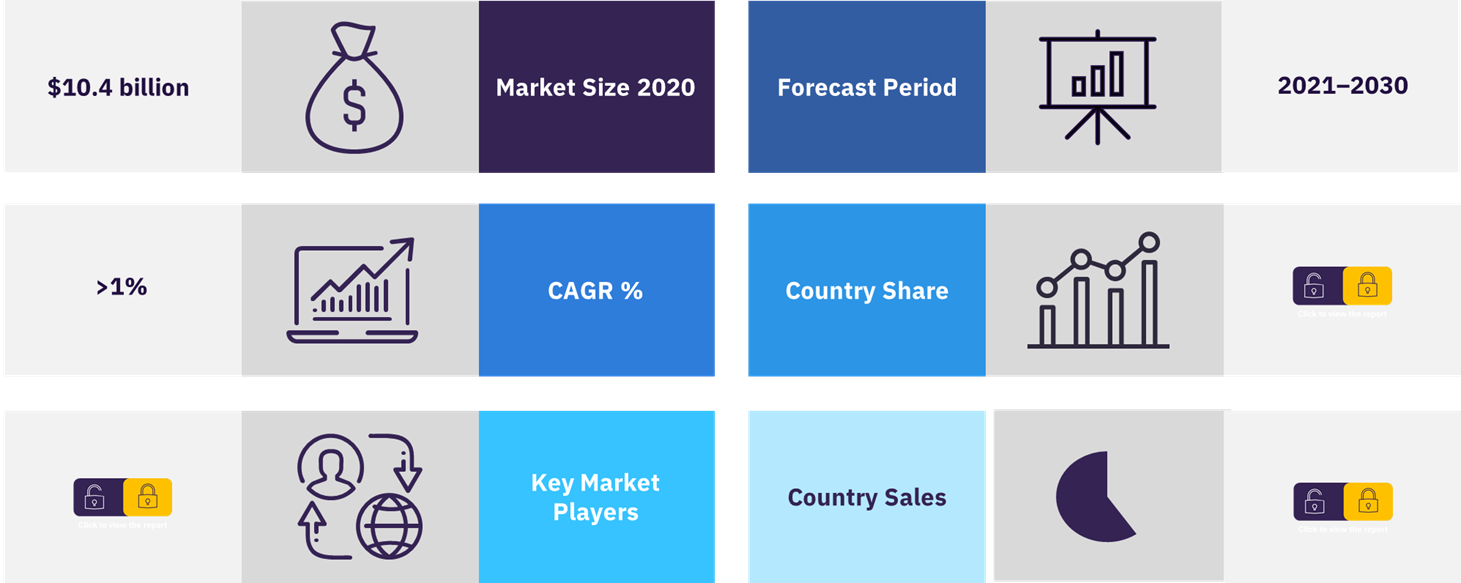HER2+ Breast Cancer – Global Drug Forecast and Market Analysis to 2030
Powered by ![]()
All the vital news, analysis, and commentary curated by our industry experts.
GlobalData valued the 8MM HER-2 + breast cancer market at $10.4 billion in 2020 and expects the market to increase at a low compound annual growth rate (CAGR) of more than 1%. This growth will be driven by the anticipated launches of five pipeline agents, the expansion of several currently approved agents into earlier lines of therapy, and a collective increase in the diagnosed incident population across the 8MM. Growth will be substantially inhibited by generic and biosimilar erosion following the expiry of multiple patents of market-leading brands. These include Roche/Genentech’s Perjeta (pertuzumab), Herceptin (trastuzumab), and Kadcyla (T-DM1), which constitute the majority of sales across the 8MM in 2020. Furthermore, expected patent expiries of Puma Biotechnology’s Nerlynx (neratinib) and Seagen’s Tukysa (tucatinib) will further suppress market growth.
The US is the largest market, accounting for more than 50% of total HER2+ breast cancer sales in 2020. GlobalData expects the US market share to remain stable over the forecast period, as the 5EU markets will see their market share decline, while China will see its market share increase.
Overview of HER2+ breast cancer global drug market
For more insights on this report, download a free report sample
What are the market dynamics in the HER2+ breast cancer market?
Breast cancer is not a single disease, but rather a group of several different tumor subtypes. Although many subtypes exist, they are generally categorized by the presence or absence of hormonal receptors (HRs), including estrogen receptor (ER) and the progesterone receptor (PR), in addition to human epidermal growth factor receptor 2 (HER2).
In the 8MM, Italy had the highest diagnosed incidence of HER2+/HR+ breast cancer in 2020 (27.43 cases per 100,000 population), and urban China had the lowest diagnosed incidence in women in 2020 (10.10 cases per 100,000 population). The rate of increase was the highest in Spain, rising from 13.26 in 2010 to 18.23 in 2020. On the other hand, Germany had a decrease in the incidence rate from 2010-2020.
The major drivers of growth in the forecast period in the 8MM are:
- Approval and launch of premium-priced therapeutics in the 8MM during the forecast period: two small molecule inhibitors (Ibrance and Piqray), two antibody-drug conjugates (trastuzumab duocarmazine and disitamab vedotin), and a checkpoint inhibitor (Tecentriq)Label expansion of established drugs like Enhertu and Tukysa into earlier, more lucrative lines of therapy
- Label expansions of established drugs like Enhertu and Tukysa into earlier, more lucrative lines of therapy
- Reformulation of established blockbusters like Perjeta and Herceptin into a branded subcutaneous, fixed-dose form which will reduce the impact of biosimilar erosion
- Increased disease incidence across the 8MM
The major barriers to growth in the forecast period in the 8MM are:
- Patent expiries of the leading brands across the 8MM, in particular Perjeta, Herceptin, and Kadcyla, which constituted the majority of sales in 2020
- Increased cost-consciousness limiting the uptake of branded therapies and novel agents in Europe and Asia
- Very efficacious and tolerable therapies in the treatment paradigm, which means the indication is a highly competitive space to enter
What are the key regions and countries in 8MM HER-2 + breast cancer market?
In 2020, the US led the sales of HER2+ breast cancer therapies followed by, Germany, China, and Japan.
The US, 5EU, and Japan’s relative global market shares are expected to remain constant over the forecast period while China’s global market share is expected to increase.
The US market is the largest of the 8MM and accounted for an estimated more than 50% of sales in 2020. This is due to the large patient population and comparatively higher prices in the country. Sales in the HER2+ market are dominated by HER2-directed monoclonal antibodies (Herceptin and Perjeta) and an antibody-drug conjugate (Kadcyla), due to extensive use in the adjuvant and metastatic settings.
The HER2+ breast cancer market in the 5EU is forecast to grow at a CAGR of 0.2% during the forecast period and will experience the weakest growth out of the 8MM. Due to earlier the patent expiry of Herceptin in Europe (2017) than in the US and subsequent higher biosimilar erosion, Perjeta and Kadcyla are market leaders across the 5EU markets, although this may differ depending on the individual region.
The Urban China market is expected to increase significantly in size by 2030. GlobalData anticipates China to become the fastest-growing market among the 8MM, with a CAGR of more than 5% during the forecast period. Distinct drivers of growth in the Chinese market include a significant increase in the diagnosed incident population over the forecast period and the development of domestically developed drugs in China.
Market report scope
| Market size (Year – 2020) | $10.4 billion |
| Growth rate | CAGR >1% from 2021 to 2030 |
| Base year for estimation | 2020 |
| Forecast period | 2021-2030 |
| Key players | Genentech/Roche, AstraZeneca, Daiichi Sankyo, Pfizer (Ibrance), Novartis (Piqray), Byondis (trastuzumab duocarmazine), and Remegen (disitamab vedotin) |
| Countries Covered | US, France, Germany, Italy, Spain, UK, China and Japan. |
This report covers opportunities for various marketed agents and pipeline agents in development across the 8MM, clinical and commercial assessments for agents in late-stage clinical development, R&D strategies, and innovative approaches in development for HER2+ breast cancer. This edition provides an update to the previous sales forecast for marketed and pipeline agents and highlights expected market dynamics by country and class of therapy across the forecast period, 2020-2030.
- Overview of HER2+ breast cancer including epidemiology, etiology, pathophysiology, symptoms, diagnosis, and treatment guidelines.
- Topline HER2+ market revenue, the annual cost of therapy, and major pipeline product sales in the forecast period.
- Key topics covered include current treatment and pipeline therapies, unmet needs and opportunities, and the drivers and barriers affecting HER2+ therapeutics sales in the 8MM.
- Pipeline analysis: Comprehensive data split across different phases, emerging novel trends under development, and detailed analysis of late-stage pipeline drugs (Phase III).
- Analysis of the current and future market competition in the global HER2+ market. Insightful review of the key industry drivers, restraints, and challenges. Each trend is independently researched to provide a qualitative analysis of its implications.
Reasons to Buy
The report will enable you to:
- Develop and design your in-licensing and out-licensing strategies, using a detailed overview of current pipeline products and technologies to identify companies with the most robust pipelines.
- Develop business strategies by understanding the trends shaping and driving the global HER2+ therapeutics market.
- Drive revenues by understanding the key trends, innovative products and technologies, market segments, and companies likely to impact the global HER2+ market in the future.
- Formulate effective sales and marketing strategies by understanding the competitive landscape and by analyzing the performance of various competitors.
- Identify emerging players with potentially strong product portfolios and create effective counterstrategies to gain a competitive advantage.
- Track drug sales in the global HER2+ therapeutics market from 2020-2030.
- Organize your sales and marketing efforts by identifying the market categories and segments that present maximum opportunities for consolidations, investments and strategic partnerships.
AstraZeneca and
Daiichi Sankyo
Celgene
Eisai
Puma Biotechnology Novartis
Macrogenics
Seattle Genetics
Jiangsu HengRui Medicine
Pfizer
RemeGen
Byondis BV
Table of Contents
Table
Figures
Frequently asked questions
-
What is the market value for the HER2+ breast cancer market in 2020?
The total market size of the HER2+ breast cancer market was valued at $10.4 billion in 2020.
-
What is the growth rate of the HER2+ breast cancer market?
The HER2+ breast cancer market is projected to grow at a CAGR of more than 1% during the period 2021-2030.
-
Who are the key market players in the HER2+ breast cancer market?
Genentech/Roche, AstraZeneca, Daiichi Sankyo, Pfizer (Ibrance), Novartis (Piqray), Byondis (trastuzumab duocarmazine), and Remegen (disitamab vedotin) are the key players in HER2+ breast cancer market.
Get in touch to find out about multi-purchase discounts
reportstore@globaldata.com
Tel +44 20 7947 2745
Every customer’s requirement is unique. With over 220,000 construction projects tracked, we can create a tailored dataset for you based on the types of projects you are looking for. Please get in touch with your specific requirements and we can send you a quote.
Related reports
View more Oncology reports









